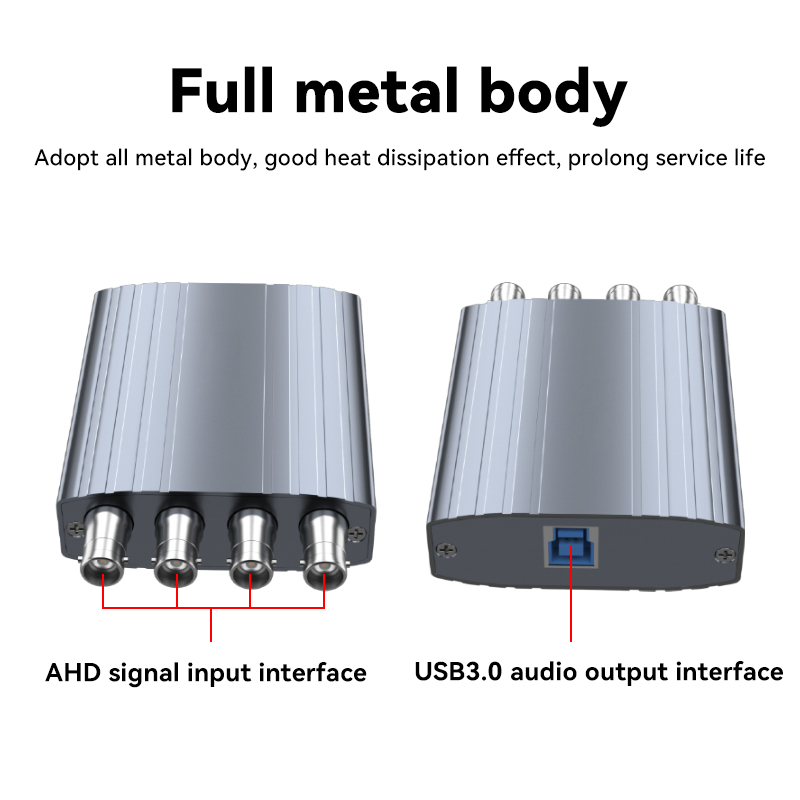Through HDMI, lossless audio and video in digital form can be transmitted at the same time very well. The main reason why DVI is not used is because it only supports video output. If you want to perfectly realize HDMI simultaneous audio and video output on the computer, you can use the following two methods:
Internal connection: The display chip and the audio chip are on the same PCB, and the sound card directly transmits the signal to the graphics card through the wiring on the PCB, and then integrates it into an HDMI signal output.
External connection: The display chip and the sound card chip are not on the same PCB, but are connected by external wires. Generally speaking, the sound card directly uses SPIDF OUT to connect to the graphics card, but there is also a dedicated HDMI audio cable.
Large transmission interval and small interface size. Without affecting the picture quality, the transmission distance of HDMI can reach 15 meters, while that of DVI is less than 8 meters. For home appliances, relaxing the restrictions on wires will greatly reduce the difficulty of wiring. With optical fiber transmission, the HDMI signal line with optical signal converter at both ends of the wire can reach 100 meters.

If there is no problem with any of the HDMI cable, computer HDMI interface, and TV HDMI interface, then you can directly use the TV to display the content of the computer. It is recommended to remove all display outputs except the HDMI cable. Connect the HDMI cable to the TV, turn on the TV first, and then turn on the host computer. Under normal circumstances, you will see the main board information on the TV. If you want to, it is recommended to reinstall the VISTA system. The reason will be explained later. If your system has already been installed If it is good, then you only need to set the input interface of the TV to HDMI and it will be OK. The system desktop will be displayed on the TV, and the default sound output device will be used as HDMI, and audio and video will be available.
Depending on the graphics card, the method to achieve point-to-point 1080P is also different, but they are all used in the settings of the graphics card. After installing the latest driver for the Intel G series graphics card, there will be a wizard on the graphics card control panel to connect to the TV. Follow the prompts step by step and you will be OK. Yes, the A card is the overscan adjustment that you often see on the forum, and the N card is adjusted in the video and TV of the NVIDIA control panel.
After connection, the image display is normal, but there is no sound output: This is also a relatively common phenomenon. First, check whether the HDMI driver in the audio device in the device manager can be installed normally. If the driver is installed normally, but there is no HDMI output in the audio output, It is strongly recommended to install and use the VISTA system. After installing the VISTA system, there will be two HD devices under the audio item in the device manager, one of which is a sound card, and the other is HDMI. At this time, the default audio output can be used. For HDMI output, after installing the sound card and graphics card driver normally, the HDMI output in the default output audio device is gone like under XP, but after connecting the computer and TV with the HDMI cable, the system will specify the default audio output as disappearing HDMI output, and the audio output at this time is normal. If you want to manually specify which output, you can go to the audio option of the device manager and roll back the installed HDMI driver to the driver installed by VISTA. The default audio output is up to you to choose.
After installing a discrete graphics card, the onboard HDMI interface has no output: Maybe no one will make this low-level mistake like I did at first. My integrated motherboard has an onboard HDMI interface. However, because the chipset is G41, I feel that the decompression effect is not good. I installed a HD3650 without HDMI interface. The onboard HDMI interface in the system can still recognize and install the driver, but it can’t recognize the TV and output. After pulling out the discrete graphics card, use the onboard graphics card and HDMI interface to display directly. It’s normal. After installing a HD3850 with HDMI interface, the HDMI interface that comes with the graphics card can also output normally, but the onboard one still doesn’t work. It seems that it can’t be fooled by the system. It doesn’t mean that the system can only recognize this HDMI interface. Make sure it works.
When connecting HTPC to TV, it is strongly recommended to only connect to TV and not to monitor at the same time. Do not use it as a computer at the same time, because when the HDMI cable is connected, only you turn on the computer, no matter whether the TV chooses HDMI mode, there will be signal output, which will affect the TV. The rest of the effects, there will be obvious interference.
The simplest setting: the TV signal source is used as HDMI; the notebook display output is used as a single digital TV; the refresh rate of the notebook display device is used as 60Hz and the resolution is used as 1920X1080.
